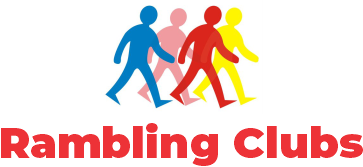In the vast expanse of language, the art of rambling stands as a peculiar tapestry, weaving intricate patterns of expression. This article embarks on a linguistic journey, exploring the multifaceted nature of rambling, from its subtle nuances to its grandiloquent crescendos.
A Linguistic Ballet
Rambling is not merely a linguistic quirk but a ballet of words pirouetting through ideas. It encapsulates the art of meandering, where sentences waltz with diverse thoughts, creating a symphony of expression. This linguistic ballet allows for a nuanced exploration of concepts, embracing the beauty found in the labyrinth of language.
When Words Take the Scenic Route
At its core, rambling is the scenic route of language, where words choose the winding path over direct highways. It’s the verbose tapestry that unfolds slowly, allowing readers to savor each linguistic thread. By taking the scenic route, the writer invites the audience to join them in a leisurely stroll rather than a hurried sprint through the landscape of ideas.
Painting with Prose
Consider rambling as the artistic flourish in the writer’s palette, akin to a painter’s brushstroke on a canvas. It’s the intentional layering of words, creating depth and texture in the narrative. This stylistic choice transforms prose into a living mural, where every convolution adds to the richness of the linguistic artwork.

The Beauty in Digression
Rambling finds its charm in the beauty of digression. It’s the unexpected detour that leads to hidden intellectual gems. These tangential thoughts, though seemingly divergent, often unveil profound insights or quirky perspectives, turning the detour into an enlightening exploration.
Parenthetical Phrasing: (Because Why Not?)
Parenthetical phrasing, a delightful tool within the rambling arsenal, adds a quizzical charm. It’s the linguistic equivalent of a friendly wink or a subtle nod, inviting readers into the inner workings of the writer’s mind. (And who doesn’t appreciate a well-placed parenthetical diversion?)
Rambling is a versatile companion in the realm of literary genres. In essays, it can be the bridge between formal discourse and personal musings. In fiction, it breathes life into characters’ inner monologues, creating a narrative that mirrors the complexity of human thought. The adaptability of rambling makes it a valuable tool in the writer’s toolkit.
Reader’s Dilemma
For readers, navigating the rambling labyrinth may present a delightful dilemma. It’s the simultaneous challenge and joy of deciphering intricate sentences, following the linguistic breadcrumbs scattered across paragraphs. The reader becomes an active participant in the unraveling narrative, embracing the unpredictability of the linguistic journey.
Conclusion
In the realm of expressive language, rambling emerges not as a linguistic idiosyncrasy but as a deliberate choice, a brushstroke in the vast canvas of communication. It adds layers, nuances, and a touch of whimsy to the art of language. As we navigate the labyrinth of rambling examples, we realize that within its convoluted corridors lie treasures of expression waiting to be discovered, appreciated, and, perhaps, occasionally puzzled over.





